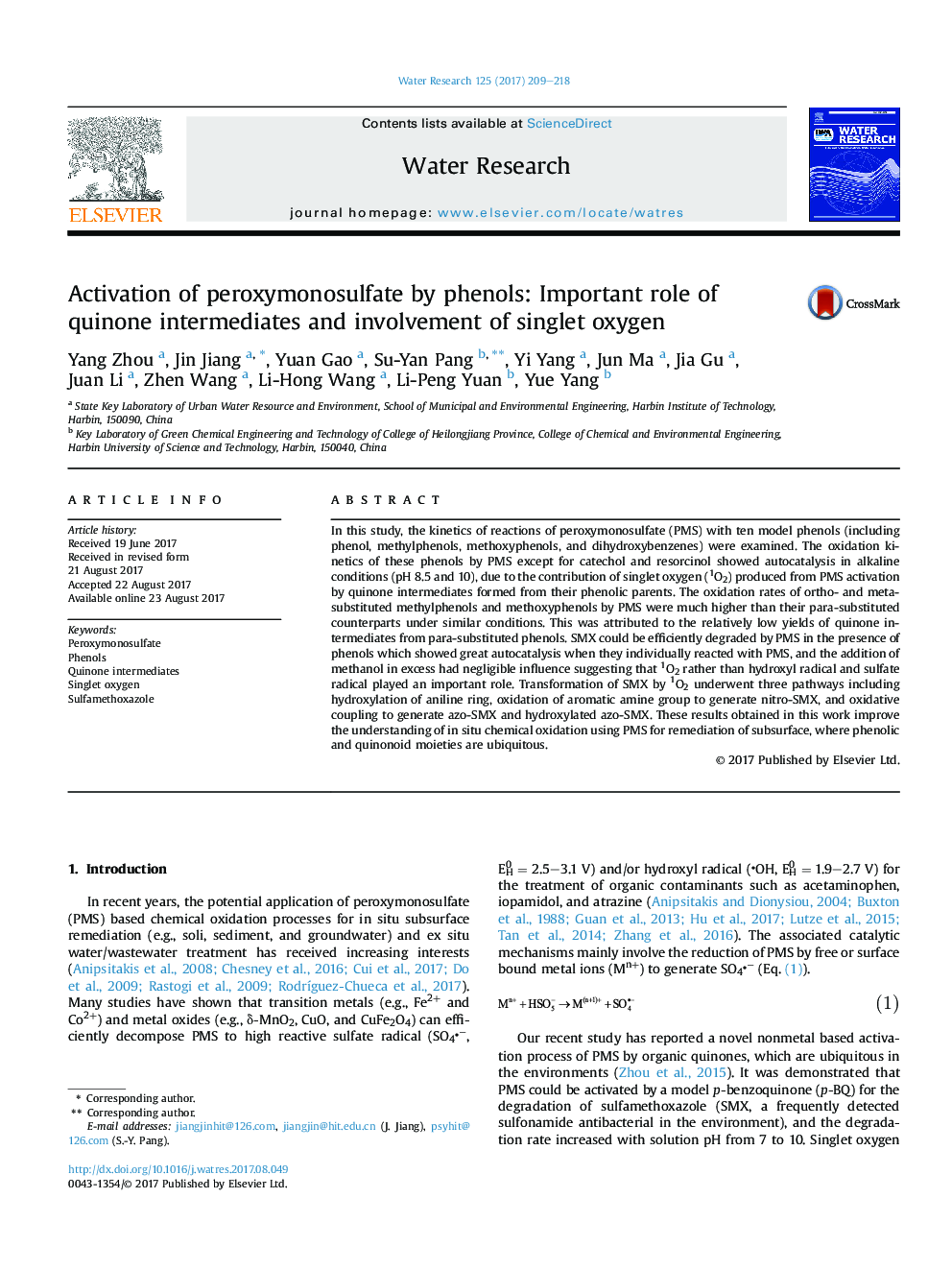| کد مقاله | کد نشریه | سال انتشار | مقاله انگلیسی | نسخه تمام متن |
|---|---|---|---|---|
| 5758792 | 1623043 | 2017 | 10 صفحه PDF | دانلود رایگان |
- PMS can be activated by phenols to generate singlet oxygen.
- Quinone intermediates play an important role in PMS activation.
- Substituent groups and their positions on phenols have great influence.
- SMX can be efficiently degraded by PMS in the presence of phenols.
- Transformation products of SMX in PMS/phenol system are identified.
In this study, the kinetics of reactions of peroxymonosulfate (PMS) with ten model phenols (including phenol, methylphenols, methoxyphenols, and dihydroxybenzenes) were examined. The oxidation kinetics of these phenols by PMS except for catechol and resorcinol showed autocatalysis in alkaline conditions (pH 8.5 and 10), due to the contribution of singlet oxygen (1O2) produced from PMS activation by quinone intermediates formed from their phenolic parents. The oxidation rates of ortho- and meta-substituted methylphenols and methoxyphenols by PMS were much higher than their para-substituted counterparts under similar conditions. This was attributed to the relatively low yields of quinone intermediates from para-substituted phenols. SMX could be efficiently degraded by PMS in the presence of phenols which showed great autocatalysis when they individually reacted with PMS, and the addition of methanol in excess had negligible influence suggesting that 1O2 rather than hydroxyl radical and sulfate radical played an important role. Transformation of SMX by 1O2 underwent three pathways including hydroxylation of aniline ring, oxidation of aromatic amine group to generate nitro-SMX, and oxidative coupling to generate azo-SMX and hydroxylated azo-SMX. These results obtained in this work improve the understanding of in situ chemical oxidation using PMS for remediation of subsurface, where phenolic and quinonoid moieties are ubiquitous.
201
Journal: Water Research - Volume 125, 15 November 2017, Pages 209-218
